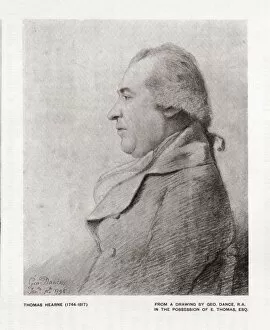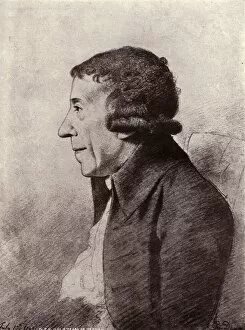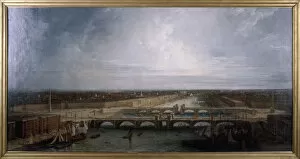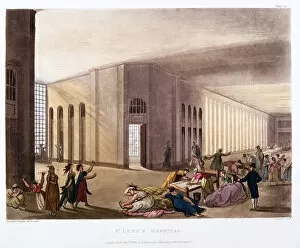George Dance Jnr Collection
"George Dance Jnr: A Visionary Architect Shaping London's Landscape" Step into the world of George Dance Jnr
For sale as Licensed Images
Choose your image, Select your licence and Download the media
"George Dance Jnr: A Visionary Architect Shaping London's Landscape" Step into the world of George Dance Jnr, a prominent figure in London's architectural history during the late 18th and early 19th centuries. Born in 1741, Dance left an indelible mark on the cityscape with his innovative designs and grand visions. One of his notable achievements was the Egyptian Hall, an iconic structure that stood proudly in Mansion House from 1795 to 1825. This magnificent building showcased Dance's ability to blend classical elements with exotic influences, captivating all who entered its doors. Thomas Hearne captured Dance's essence through a portrait dating back to around 1902. The unknown artist skillfully depicted his dignified presence and intellectual prowess, reflecting his significant contributions to architecture. Dance collaborated with renowned artists like M. A. Rooker, A. R. A. , whose work from 1793 showcases their shared passion for capturing London's beauty through artistry. Their collaboration brought forth stunning visual representations of landmarks such as St Bartholomew-the-Less Church and the proposed London Bridge in 1802. Not limited to architecture alone, it also had a keen interest in historical preservation. His involvement with Horace Walpole, Fourth Earl of Orford in preserving Newgate Prison's Debtors Door is testament to this commitment towards conserving pieces of London's past for future generations. The visionary architect even dared to reimagine structures like Double London Bridge proposed for London in 1800. Through his artistic vision and technical expertise, he envisioned a bridge that would have transformed the cityscape forever. Dance’s influence extended beyond physical structures; he played a pivotal role in shaping cultural spaces too. The Theatre Royal Bath stands as one such example where he lent his expertise to create an enchanting venue for theatrical performances that still captivates audiences today.














